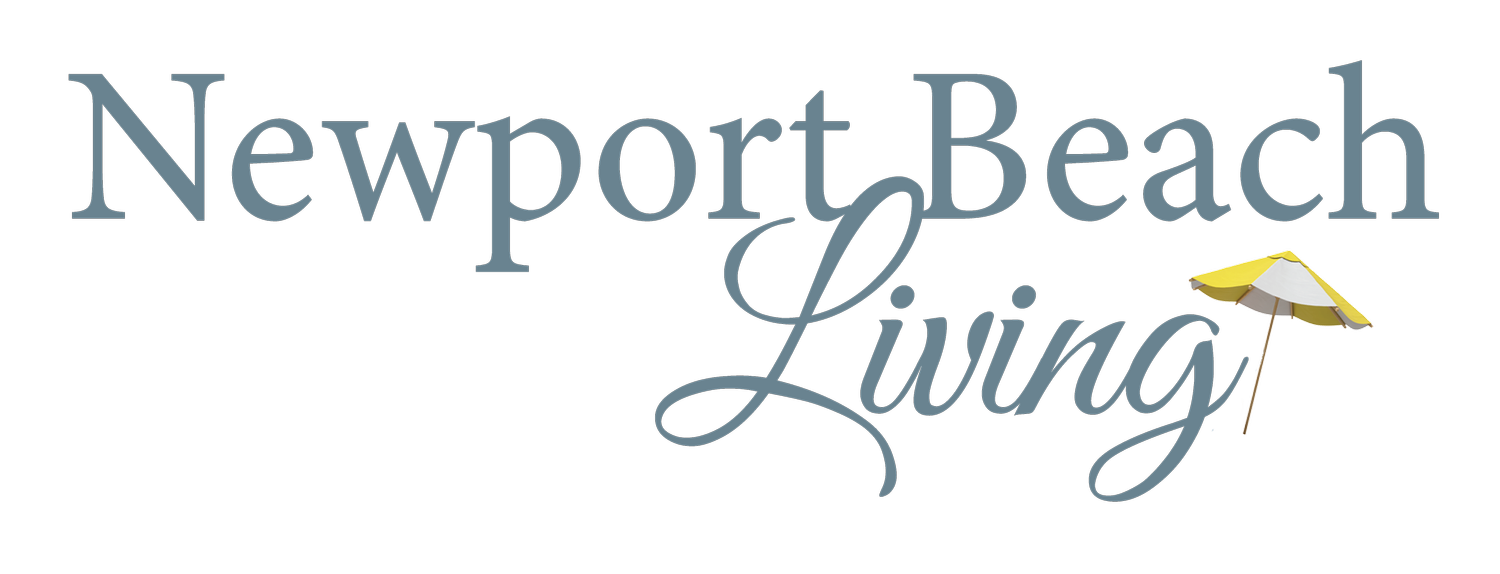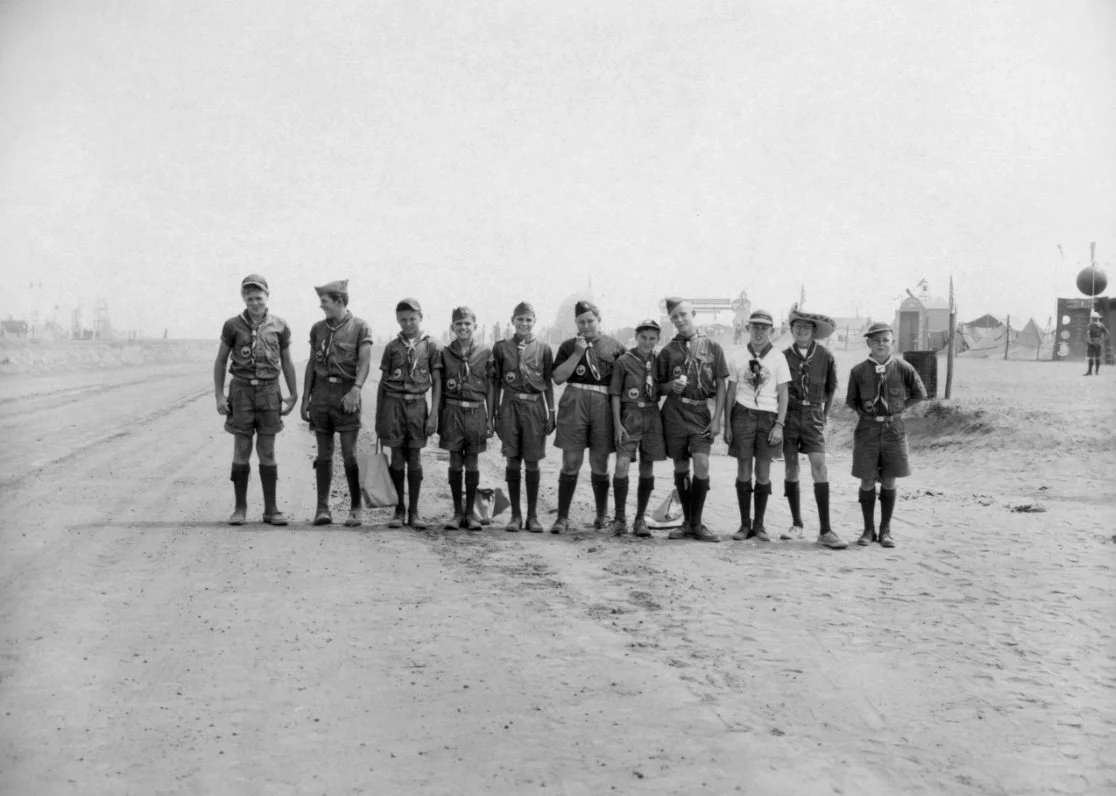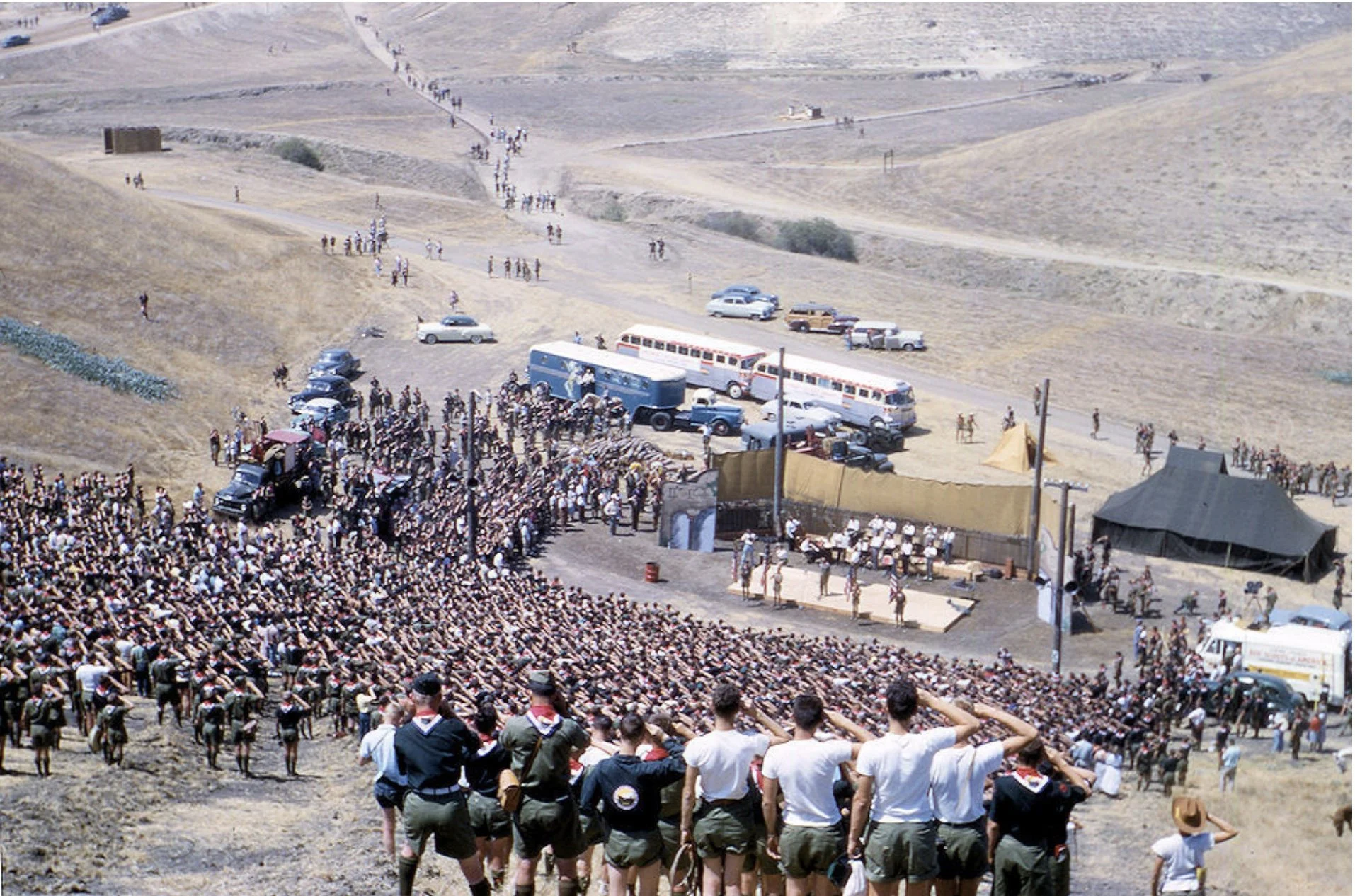Scout’s Honor: The Rapid Rise and Fall of Jamboree Town
By: William Lobdell, Photo Credit: Orange County Archives
In the early 1950s, the Boy Scouts of America expressed a desire to hold its next Jamboree (which took place every three or four years) west of the Mississippi River for the first time. Word of this trickled down to William Spurgeon, an Irvine Co. vice president (and grandson of the City of Santa Ana’s founder) who was active in Scouting. He asked his boss, Myford Irvine if an unused portion of the 93,000-acre Irvine Ranch could be used for the Jamboree.
The Irvine Co. president agreed to set aside for the Boy Scouts 3,000 acres of rolling hills, which would later become Newport Center and the neighborhoods of Eastbluff and Big Canyon. But just as importantly, he also offered his company ample resources to help create a mid-sized city from scratch. This entailed leveling four square miles of land (the 1950s weren’t exactly an environmentally sensitive time), building eight miles of dirt roads, and helping install the rest of the infrastructure.
Of course, this wasn’t an entirely altruistic gesture. Prepping the Jamboree site also left in place the bones for future Irvine Co. developments. For example, 50% of the new streets were eventually paved and made permanent, including Jamboree Road, now a main artery through the town. Given the 10.0 degree of difficulty in creating a town of 50,000 (which was four times larger than Newport Beach at the time), it seemed beyond Herculean that Jamboree Town, as it was called, took less than a year to build. But then again, when Irvine Co. flexes its muscles, almost anything is possible.
By the time Jamboree Town opened on July 17, 1953, the city–which had a life span of less than two weeks–consisted of 30,000 two-man tents, a post office, medical and dental centers, 150-person police force, fire stations, phone center (and 32,000 feet of telephone wires), trading posts, commissaries, the power plant, bank, 88 miles of water pipes, four miles of sewer pipes, a 16,000-car parking lot, and six amphitheaters, including one carved into a Big Canyon hillside that took up 65 acres, seated 75,000, and had a stage the size of a football field. Want more? Jamboree Town also had a zoo, aquarium, aviary, and working farm.
At the Jamboree’s opening ceremonies, a euphoric Myford Irvine told the Scouts, “I can say this is the greatest moment of my life, and I hope for you, also. On behalf of the Irvine Ranch, I extend to you a welcome as big as all outdoors.” The citizens of Jamboree Town came from every state in the nation, including the territories of Hawaii, Alaska and Puerto Rico, and 16 foreign countries. The seven-day mega-event captured nationwide attention. President Dwight Eisenhower, recorded on film, gave the closing address; Hollywood’s biggest stars put on a two-hour variety show opening night emceed by Bob Hope; filmmakers made two documentaries; and a Scout-crazed nation watched the Jamboree on television.
There are so many fun/amazing facts about the Jamboree that it’s tough to stuff them all into one story, but here are 11 favorites:
1. Richard Nixon, vice president of the U.S., spoke at the Jamboree and spent a Saturday night there as an honorary Scout. He slept in a tent, ate breakfast the next day with his fellow Scouts, and, most surprisingly, wore shorts. Nixon wasn’t exactly an informal guy, so becoming a Boy Scout was completely out of character for him. Remember, as president, Nixon used to walk the beach at San Onofre (steps from the Western White House) in a dark business suit, tie, and wing- tipped shoes. That was his version of relaxing.
2. The fee for the Jamboree was just $48 per boy, and because the Jamboree turned a profit, a refund of $13.50 was given to each Scout. If you do the math, a Scout paid less than $5 per day to attend the Jamboree.
3. Most of the Scouts traveled to Newport via one of 105 specially commissioned trains. Once at a Southern California train station, the youth traveled in silver buses to the Jamboree. Ten thousand 10,000 Scouts arrived daily in Newport Beach.
4. Trains weren’t the only means of transportation. Five Canadian Scouts took a $700 cab ride from Montreal to Newport, a journey that took five days and was said to be cheaper than taking the train. In addition to cab and train rides, at least seven Scouts hoofed it to the Jamboree, departing from the San Fernando Valley and hiking seven days to get to Newport Beach.
5. The Scouts ate a lot–like 1.6 million tons of food and drink, including 500,000 eggs, 150,000 donuts, 170,000 loaves of bread, 63,000 pies, 750,000 bottles of soft drinks, and 625,000 quarts of milk, plus tons and tons of ground beef, chicken, hot dogs, steak, and vegetables. All this and
more created 1.5 tons of trash daily.
6. To cook all that food, 48 railroad carloads of charcoal were brought in.
7. The Jamboree’s motto was “Forward on Liberty’s Team,” a slogan that reflected the ongoing Cold War. Around the campfires and at large assemblies, Scout leaders and guest speakers often contrasted democracy (and the democratically run and god-fearing Boy Scouts of America) with godless Communism and compulsory membership in Marxist organizations.
8. Speaking of god, religious services at the Jamboree included the Protestant, Catholic, Jewish, and Buddhist faiths. That was insanely inclusive for 1953.
9. Workers dug 4,500 latrines for the Jamboree, and after the event, eucalyptus trees were planted in many of the holes. So, if you see a mature eucalyptus tree in the Newport Center/Eastbluff/Big Canyon area, you now know what likely kickstarted its growth.
10. Jamboree Town had its own phone number: JA-boree 1953 (numbers were six digits back then).
11. To handle the crush of traffic, the U.S. Marine Corps installed a temporary bridge over Upper Newport Bay, running parallel to the permanent Coast Highway Bridge. The Jamboree ended on July 23, with closing ceremonies in the main amphitheater drawing a reported 90,000 spectators. The Scouts wrapped up the evening by singing “Auld Lang Syne” amid a fair amount of tears. The next day, they started to return home. And within four days, Jamboree Town had turned into a ghost town with only memories (and Jamboree Road) remaining.
William Lobdell is an award-winning journalist and host of the local history podcast, “Newport Beach in the Rearview Mirror.” Subscribe to follow along as he shares some of the most fascinating stories about our beloved town. You can also follow him on Instagram @newport_in_the_rearview_mirror.






